Rebuilding the Syrian Army: Potentials, Challenges, and Risks
The process of rebuilding the Syrian army after the fall of the Assad regime faces structural and political challenges that hinder the formation of a unified national military institution. The current Syrian military landscape suffers from deep divisions, along with concerns about the ideological identity of the emerging army and its impact on internal cohesion and international stance. Moreover, there is limited representation of Syria’s diverse components within its structure. Therefore, the success of rebuilding the Syrian army depends on its ability to represent the diverse Syrian society and on the presence of international support conditioned by accountability and transparency.
by STRATEGIECS Team
- Release Date – May 15, 2025
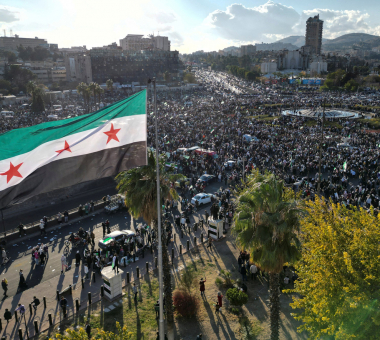
This opinion article is part of the series: Syria.. Transformations, Variables, and the Future of the State of Uncertainty
The rebuilding of the Syrian army following the fall of the Assad regime in December 2024 is an extremely complex and pivotal task for achieving the country’s long-term stability. This endeavor is not merely a military matter; it is fundamentally tied to the broader project of state-building and formulating a new social contract. The process is influenced by several factors, most notably national reconciliation and the balancing of regional interests and concerns. The success or failure of this experience is expected to have significant implications for the stability and security of the broader Middle East.
Key challenges include addressing internal divisions among factions and integrating them effectively, establishing robust mechanisms for oversight and accountability, dealing with the issue of foreign fighters, and reactivating the mandatory conscription system in a transparent manner. Additional challenges involve overcoming logistical and financial constraints, securing multilateral international support, and defining a clear national military doctrine.
Accordingly, this paper aims to provide a comprehensive analysis of the facts, potentials, and challenges associated with this process, with a focus on the current fragmented state of the army, potential models for its restructuring, and anticipated obstacles.
Current Syrian Military Landscape
The rapid collapse of the former Syrian regime in December 2024, following a military offensive led by armed factions—most notably Hay’at Tahrir al-Sham(HTS)—marked a dramatic turning point in the Syrian landscape. The country entered a new phase fraught with uncertainty and complex challenges, particularly concerning the future of its armed forces.
The Syrian Army, which had long served as the backbone of the regime, was disbanded after a decade of involvement in an internal conflict that severely undermined its capabilities. Its size had been reduced to less than half due to casualties, desertions, and declining morale, ultimately leading to its complete disintegration with the fall of the regime. The army was officially disbanded following the transfer of power, leaving a significant vacuum in the state’s structure and triggering a state of security instability.
This coincided with an Israeli aerial military operation named “Operation Bashan Arrow,” which, on December 12, 2024, resulted in more than 352 airstrikes across 13 Syrian governorates. The strikes led to the destruction of more than 80% of Syria’s strategic arsenal, including air defense systems, radar installations, and naval assets. Simultaneously, Israeli forces took control of the Syrian buffer zone and several key strategic positions, most notably Mount Hermon, thereby signaling the collapse of the 1974 Disengagement Agreement signed between Syria and Israel.
Meanwhile, HTS emerged as a key player in the political and security landscape, forming the backbone of the transitional administration and, later, the interim government. Ahmad al-Sharaa, formerly known as Abu Mohammad al-Julani, assumed leadership of the transitional phase before declaring himself president on January 29, 2025.Despite repeated statements expressing his intention to build a national army that reflects Syria’s ethnic and religious diversity, subsequent practical steps did not align with this vision. It became evident that the new army was composed almost entirely of members of HTS and other rebel groups.
Former leaders of HTS now dominate Syria’s ministries and military and defense institutions. The head of HTS’s armed wing, Murhaf Abu Qasra (formerly known as Abu Hassan al-Hamawi), was appointed minister of Defense. At the same time, Ali Nour al-Din al-Naasan, a former commander within the group, assumed the position of chief of staff. Moreover, most military promotions and appointments within the new army were concentrated among other former HTS members, such as Mohammad Khair Hassan Shu’ayb (formerly Abu al-Khayr Taftanaz), the military commander in HTS, and Abdo Mohammad Sarhan (formerly Abu Asim Ghouta), who had served as the emir of Jabhat al-Nusra in Eastern Ghouta.
Furthermore, several foreign fighters within the group were granted military positions, most notably Abdul Rahman Hussein al-Khatib (known as Abu Hussein al-Urduni), Abdulaziz Dawood Khodabardi (known as Zahid), and Omar Mohammed Jaftashi (known as Mukhtar al-Turki). This one-sided orientation within the security and military apparatus has fueled growing fears that loyalty is being prioritized over competence in appointments, casting serious doubt on the genuinely national character of the new army.
Regional and international actors have likewise voiced concern over the installation of foreign fighters in senior posts within the Syrian military, given the potential repercussions for the security of neighboring countries, particularly since some of these individuals have extremist backgrounds and prior affiliations with international terrorist organizations. These developments unfold against a backdrop of profound security fragmentation shaped by multiple armed factions with various loyalties and ideologies, further complicating the landscape and rendering the creation of an inclusive national army an exceptionally daunting challenge.
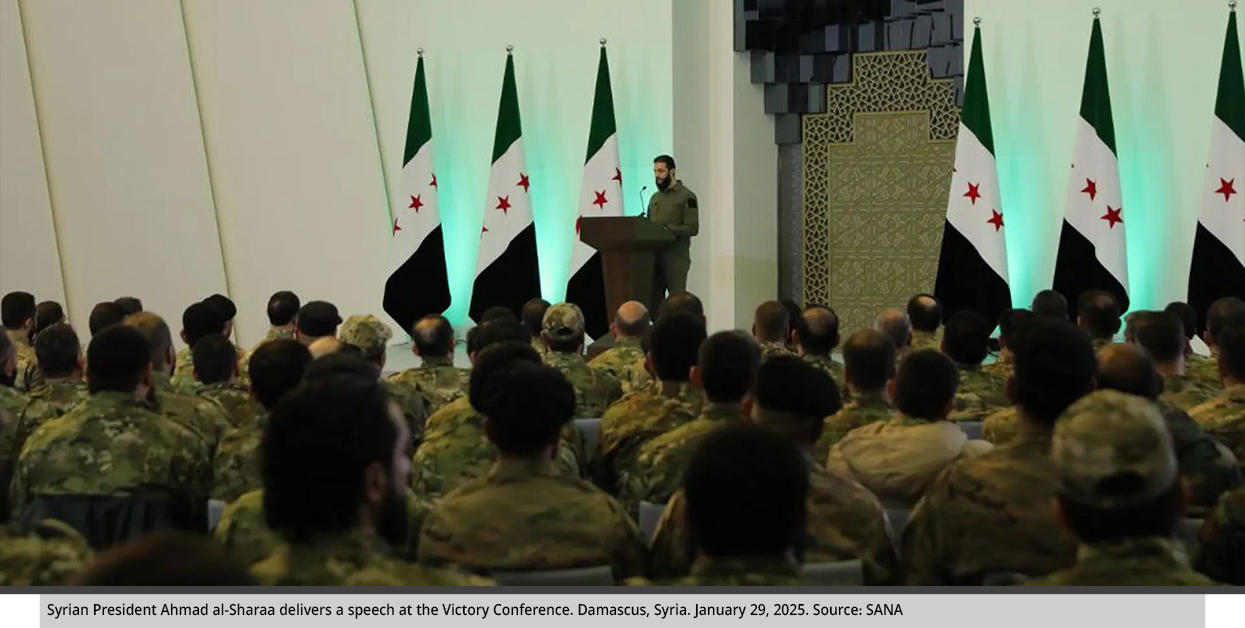
Challenges to the Syrian Leadership’s Approach to Building the Army
The approach adopted by the Syrian leadership in establishing and building the new Syrian army is based on a “top-down integration” strategy. Initially, the Ministry of Defense was formed with a centralized command structure, followed by the official announcement of the dissolution of existing armed factions, most notably HTS, and their integration under the ministry’s authority. However, this approach faces several challenges that may hinder the creation of a truly national institution and an effective centralized command structure, particularly in light of two main factors: first, the ministry’s ability to dissolve internal divisions among the various factions under its umbrella and, second, the impact of this integration model on the trust of certain segments of Syrian society—such as the Kurds, Druze, and Alawites—alongside other groups that have so far opted for a passive stance toward political and security participation, such as Christians and Ismailis.
Regarding the first factor, the integration of armed factions into the new army presents a multifaceted challenge. These fighters come from diverse backgrounds and possess differing motivations for combat, with many having participated in various phases of a complex Syrian conflict marked by widespread and brutal violations. This raises serious questions about the new leadership’s commitment to establishing strict and effective vetting mechanisms capable of identifying and excluding individuals involved in war crimes or human rights violations, whether in the past or at present.
Another equally important question arises regarding the willingness of these factions to fully commit to the structure of the new army and to abide by the decisions of the Ministry of Defense or if they will seek to maintain partial autonomy under the guise of superficial integration. This issue is surrounded by considerable doubt, particularly in light of the current experience. Despite repeated public statements affirming the unification of Syria’s armed forces under a single national umbrella, strong evidence suggests a significant gap between official rhetoric and the actual situation on the ground, revealing a structural imbalance that hampers integration efforts.
This contradiction is manifested in several ways. For instance, the Syrian National Army (SNA), which is backed by Turkey and comprises an estimated 29,000 fighters, has formally agreed to join the Ministry of Defense, yet it continues to resist full integration and retains a significant degree of operational autonomy. It still conducts independent military operations against Kurdish forces, and many of its factions have been implicated in unauthorized activities, including looting and human rights violations, particularly in Kurdish-majority areas. Some of these factions have also played controversial roles in sectarian violence, especially in coastal regions. Thus, integration remains, for now, a largely theoretical or symbolic measure in the face of deeper issues that go beyond procedural aspects. This is due to a combination of factors.
1- The deep ideological differences and disputes among the various armed factions operating under the Ministry of Defense’s umbrella, as well as the divergence in their loyalties and ideological references, with each faction clinging to its own narrative and historical grievance.
2- The integration of factions while preserving their original entities and organizational structures. For example, the Sultan Suleiman Shah Division was renamed the Division 25th Hama and the Hamzat Division, led by Syrian rebel Saif Abu Bakr, became the 76th Division. This indicates that the new leadership is approaching the integration process as a merger of organizational blocs rather than individual fighters, even though integrating and rehabilitating individuals is institutionally more effective.
3- The continued reliance of factions on illicit economies and their receipt of financial and logistical support from external sources, most notably the SNA, which still receives support backing from Turkey.
4- The need to rebuild the military infrastructure, which has been severely damaged by years of war and repeated Israeli airstrikes, is a massive logistical and financial undertaking that the government faces amid a collapsed economy, imposing strict limitations on efforts to re-equip and modernize the armed forces. As a result, international assistance becomes essential—though it may also pose a potential risk of dependency.
Overall, in terms of public and societal approval, there is a general lack of consensus regarding the policies HTS adopted after taking control, particularly in the military sphere. Deep concerns persist among minority groups about the dominant role of HTS and the possibility of establishing an authoritarian regime that fails to safeguard their rights or interests.
These fears have been amplified by the evident reliance on loyalty as the main criterion for military appointments and HTS’s firm grip on the security and military landscape. Furthermore, the integration of individuals with extremist ideologies and past affiliations with transnational terrorist networks raises serious questions about the identity of the new army and the likelihood of it becoming a purely ideological force.
The weak integration of minorities and the lack of diversity within the structure of the new Syrian army are a major weak point. However, this case cannot be separated from its wider structural context, whether the sectarian legacy within the former army or the socialist economic system that governed Syria for decades. These contexts were reflected on the nature of the Syrian society. For instance, the Sunni, Kurdish and Christian sects were known for their reluctance to voluntarily serve in the army while the former regime imposed two semi-compulsory options for the Alawite component to secure a living: either join the army or work in the public sector.
In addition to the above, there is a divergence of views among Syrian factions regarding the most suitable model for building the new army. For example, the Syrian Democratic Forces (SDF) proposed a different model as a condition for joining, which involved being considered a semi-autonomous entity that retains its structures under the supervision of the central government, similar to the experience of the Peshmerga forces in Iraq. However, this proposal was strongly rejected by the transnational government.
In fact, the two aforementioned issues—weak integration and weak societal representation—are directly linked to the influence of external actors. Turkey seeks to establish military bases in Syria without clashing with Israel, maintains constant pressure on the SDF without provoking the United States, and simultaneously pushes for SNA’s integration into the new structure while preserving its relative autonomy in a way that serves Turkish interests.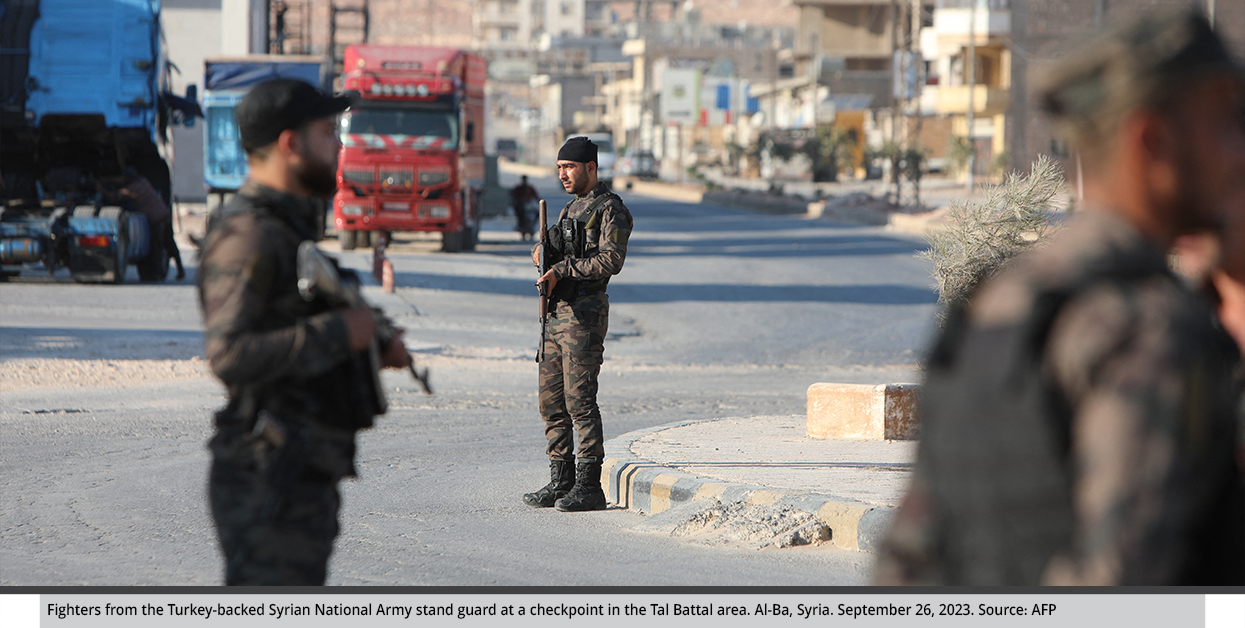
As for Russia, it continues to maintain an active military presence and seeks to extend it, particularly in coastal areas, further complicating the security landscape. Meanwhile, Israel continues to carry out military strikes that cause significant damage and pursues a policy aimed at establishing a threat-free border geography, without plunging the region into complete chaos. This approach is reflected in Israel’s preference for the emergence of a weak, demilitarized Syrian state.
From a Doctrinal Army to an Ideological Army
The former Syrian army was closely tied to the ideology of the Ba’ath Party, which formed the backbone of the Assad family’s rule. The army’s role extended beyond defending the state’s borders and sovereignty from external threats; it also served as a political and ideological tool to ensure the regime’s survival and continuity.
Currently, there are growing concerns about a similar model reemerging—this time with a shift from a partisan political ideology to a sectarian one, influenced by HTS and its ideology. These fears are particularly heightened due to HTS’s perceived reluctance to fully abandon “jihadist Salafism,” the increasing influence of foreign fighters within the new army, statements from officials in the transnational government, and the constitutional declaration on March 13 that identified Islamic Sharia as the new foundation of governance. Together, these factors appear to be shaping the direction of the new army’s formation.
Adopting this model and entrenching the ideological character of the new army carries significant local, regional, and international implications. On the domestic level, it raises serious concerns about the leadership’s ability to control army personnel and maintain the stability of the military institution. This instability was clearly reflected in the massacres that occurred along the Syrian coastal areas between March 6 and 10 in which each faction sought to shift blame and responsibility onto others. The incident also exposed a lack of coordination and communication among the newly formed brigades and divisions.
Moreover, this model undermines national justifications for excluding foreign fighters from leadership positions. The continued presence and influence of such figures only deepens the fears of other Syrian communities, discouraging their participation, particularly among members of the Sunni population, the majority of whom do not align with such ideologies. It also closes the door to the millions of Syrian refugees expected to return, many of whom were raised in liberal societies and may prefer the adoption of Western-style models in Syria.
The ideological character of the new Syrian army, if it becomes firmly entrenched and clearly defined, will have repercussions for Syria’s neighboring countries, though the nature and intensity of these concerns will vary depending on each country’s strategic calculations. All Arab states want Syria to emerge as a moderate, stable country that resembles the rest of the region rather than as a model that could fuel political polarization, ideological rivalries, or a return to competing regional alliances.
While Arab countries were quick to engage with the emerging authority in Damascus following the regime change, largely due to the previous regime’s enabling of Iranian influence and the hybrid threats that ensued, they are equally wary of replacing Shia political Islam with a Sunni version. The region has already experienced the destabilizing effects of such models, whether through the rise of Islamist parties following the so-called Arab Spring or the spread of extremist groups like ISIS that controlled vast areas of Iraq and Syria until 2018.
Therefore, the concerns of Arab states must be taken seriously in the process of building the new Syrian army. Ignoring these concerns could result in those countries distancing themselves from sharing their military experience or contributing to the development of the army’s structure and doctrine, both of which require a level of expertise that the current Syrian leadership may not possess.
In addition, Israel has taken a clear stance in rejecting the idea of sharing its borders with a force driven by ideological motives. Immediately following the regime change, Israel moved to expand the buffer zone and attempted to establish a secure depth in southern Syria by building ties with several Druze community leaders under the pretext of offering them protection.
However, this strategy carries an inherent risk of reinforcing long-term instability and creating a power vacuum that could be exploited by other regional actors. Although Israel’s rhetoric toward the new authorities in Damascus has somewhat shifted, its continued military interventions in Syria, despite widespread international condemnation, remain a significant and direct challenge to the new administration’s sovereignty and its efforts to rebuild the armed forces.
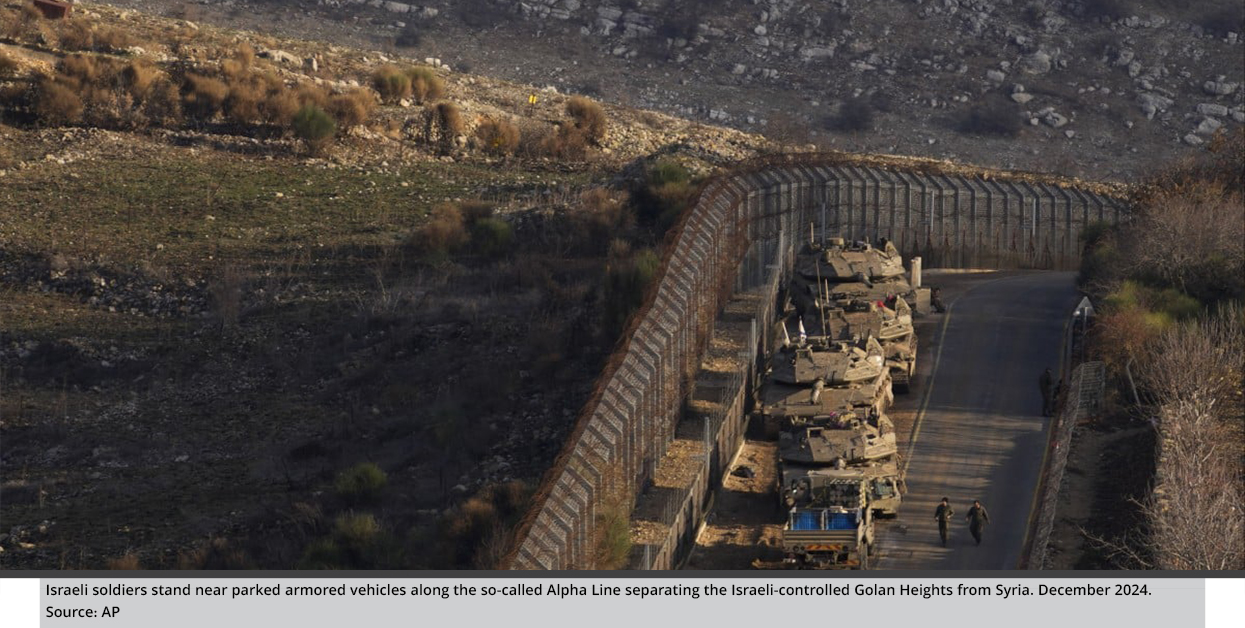
At the international level, which is is critical in supporting the rebuilding of the Syrian army, there is a clear need for coordinated international assistance to provide the financial resources, training programs, and equipment required for the new armed forces. However, such support is contingent upon meeting several conditions set by Western countries.
Foremost among these is the expectation that the military structure aligns, at least relatively, with those of Western armies. Additionally, there must be robust mechanisms for military and civilian oversight and accountability to prevent the misuse of aid or its exploitation in ways that could destabilize Syria or the broader region. Equally important is the availability of comprehensive training and education programs that emphasize professionalism, human rights, and international humanitarian law—elements essential for building a modern and effective military force.
Finally, rebuilding the Syrian army is not merely a military endeavor; it is a complex process that involves national reconciliation and balancing regional interests. Although exceptionally challenging, it is a task fraught with numerous risks and obstacles.
In reality, if the Syrian army is formed properly, it can lay the foundation for a peaceful and successful transitional process—but only if it reflects the diversity of Syrian society in its composition. Such an army could play a vital role in addressing long-standing issues in the relationship between the state and its citizens, as well as among the various social components of the country. It would embody a participatory approach that represents both the state and the people. Conversely, failure to achieve this could lead to significant local and regional consequences.
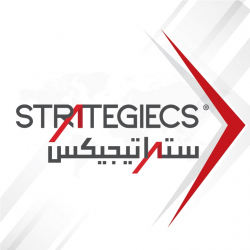
STRATEGIECS Team
Policy Analysis Team
 العربية
العربية